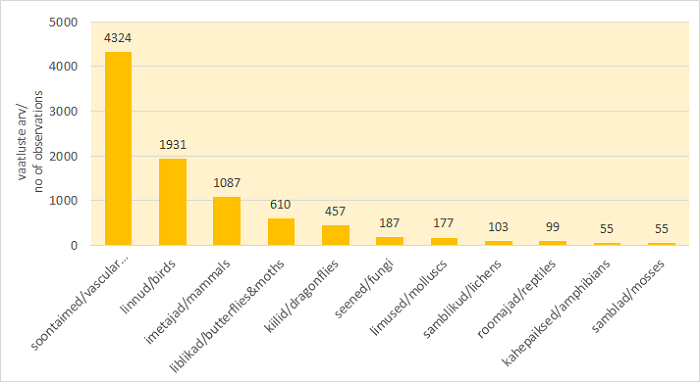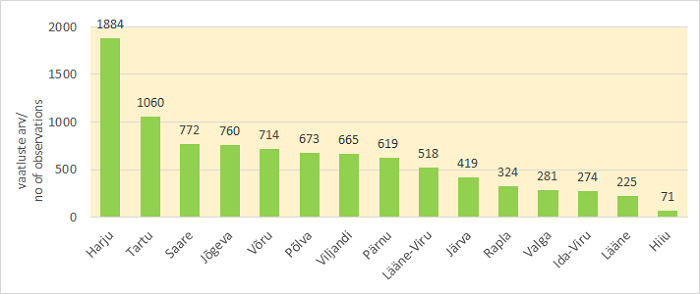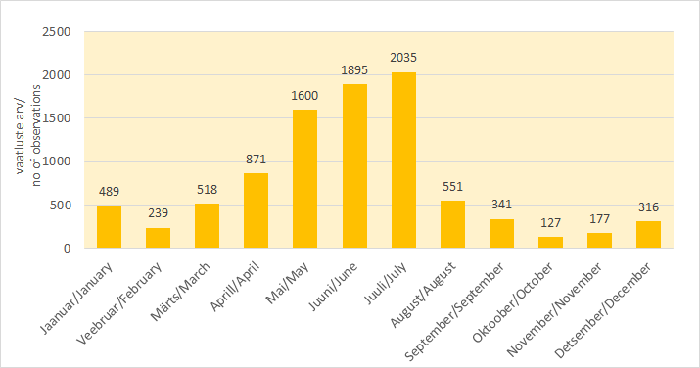Report of database usage in 2017
USING OF NATURE OBSERVATIONS DATABASE IN 2017
In 2017, users submitted 9,159 observations to the Nature
Observations Database. Next map shows distribution of inserted observations in 2017.

By groups of species inserted observations divided as
follow (here are only TOP 10 of species groups):
1) vascular plants - 4324 observations,
2) birds - 1931 observations,
3) mammals - 1087 observations,
4) butterflies/moths - 610 observations,
5) dragonflies - 457 observations,
6) fungi - 187 observations;
7) molluscs - 177 observations,
8) lichens - 102 observations,
9) reptiles - 99 observations,
10) mosses and amphibians - 55 observations.

The most popular species which observations were entered were:
Capreolus capreolus 240 observations, Castor fiber 107 observations, SDactylorhiza fuchsii 101 observations, Talpa europaea 86 observations, Listera ovata 86 observations, Vulpes vulpes 83 observations, Vanessa atalanta 75 observations, Platanthera bifolia 71 observations, Dactylorhiza baltica 69 observations and Lepus europaeus 66 observations. Summary observations of 1335 species were entered during the year.
Observations of species, which are under nature
conservation in Estonia, were entered 2011: 52 of these were observations of species under protection category I, 456 under protection category II and 1503 under protection category III.
261 persons entered their observations to the Nature
Observations Database in 2017. 139 of them inserted three or more
observations, 58 of them inserted more than 10 observations and 15 of them inserted more than 100 observations. Two persons entered even more than 1000 observations.
By county: users entered more than 100 observations to
the Nature Observations Database from 14 counties. First was Harju (1884). Followed Tartu (1060) and Saare (772).

Observations submitted to the database were more frequent
in June and July. The biggest numbers of inputs were in July (2035). Next were in June (1895).
